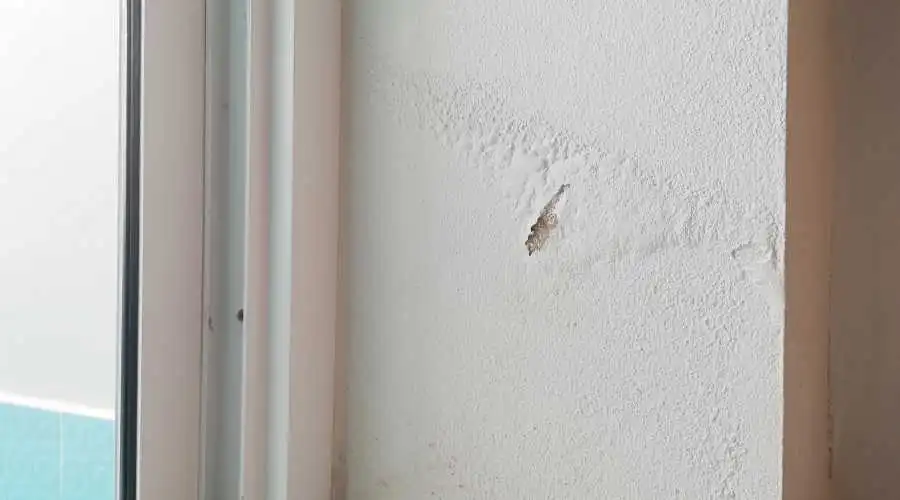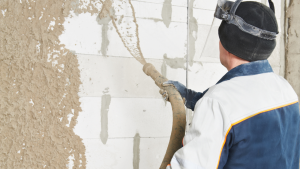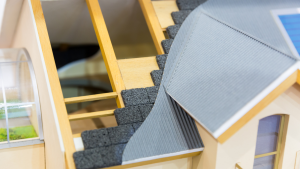Discovering water damage within your home’s walls is concerning, particularly for homeowners with stucco homes built from the early 2000s to the mid-2010s. In these cases, poorly installed stucco systems may be the culprit, leading to significant water damage that poses risks to the house’s health and structural integrity. It’s crucial to promptly assess whether your stucco is experiencing water-related issues and seek assistance from a knowledgeable stucco expert to address the problem.
Acting swiftly to repair your damaged home is of utmost importance. Delaying repairs allows water damage to escalate, resulting in increased remediation costs. The urgency stems from the fact that prolonged water exposure can lead to more extensive and costly repairs.
Therefore, homeowners are strongly advised to prioritize promptly identifying and resolving water damage issues to safeguard their well-being, home value, and financial resources. Experience stucco excellence in East Brunswick tailored solutions, impeccable professionalism, and the finest quality materials.
Stucco Maintenance Tips
1. Clean Stucco in Spring
Stucco is like a sponge and needs careful cleaning. Spring is the best time to do it because the warmer weather helps open up tiny holes in the plaster. Cleaning in spring saves you from the trouble of washing it in the fall.
2. Use a Special Stucco Cleaner
Stucco, made of sand and cement, can wear down over time. To stop mold, use a special cleaner with sprays or powders. Just use the right amount following what the label says.
3. Apply Stucco Primer Before Stucco
Stucco can soak up water and get damaged. Use a stucco primer before applying it to help avoid this. The primer also seals up tiny holes; you don’t need to wait for it to dry before adding the stucco.
4. Check the Stucco Sealer
If you’re putting stucco on a roof, use a sealer to keep water out. It makes the plaster strong and resistant to weather and comes in different colors to match your home.
5. Apply Stucco Outside
Stucco is great for outside walls. It keeps moisture away and helps cool the house in summer. Put stucco outside in late spring or early fall, using the same stuff you’d use inside.
6. Look for Surface Bubbling
If you see bubbles on your walls, it might mean there’s a water problem. Fix it fast, especially at the bottom of the walls where water collects.
Addressing Water Damage in Your Stucco
If you observe signs of water damage, take immediate action to prevent further issues:
- Consult Stucco Experts – If you suspect water damage, connecting with professionals who understand stucco is crucial. They will thoroughly inspect the damage and provide valuable insights into the extent of the problem. These experts can recommend effective solutions to address the issue.
- Repairs and Restoration – Depending on how severe the water damage is, repairs may be necessary. Skilled professionals have the expertise to carefully remove and replace damaged stucco, ensuring that your home not only regains its structural integrity but also looks aesthetically pleasing after restoration.
- Preventive Measures – To avoid future water damage, take proactive steps such as enhancing drainage systems, sealing cracks, and applying waterproof coatings. These preventive measures act as a shield, safeguarding your home from potential water-related issues.
- Regular Maintenance – Pay close attention to your stucco and make regular maintenance a habit. This proactive approach helps detect any signs of water damage early on, allowing for timely intervention and minimizing potential harm to your home.
- Professional Installation – When installing new stucco, trust experienced professionals like CMB Newark Stucco & EIFS. Proper installation is a critical step in preventing water intrusion from the beginning. Expert installers have the expertise and abilities to ensure that your stucco serves its purpose effectively and stands up to the elements, contributing to the long-term durability of your home’s exterior.
You’ve made a wise investment with your stucco siding that adds to your home’s attractiveness and overall value. It’s crucial to spot and deal with water damage early to maintain its durability and structural strength. Recognizing signs of water damage and getting professional help when necessary will ensure that your stucco continues to have a long-lasting and beautiful exterior for many years.




